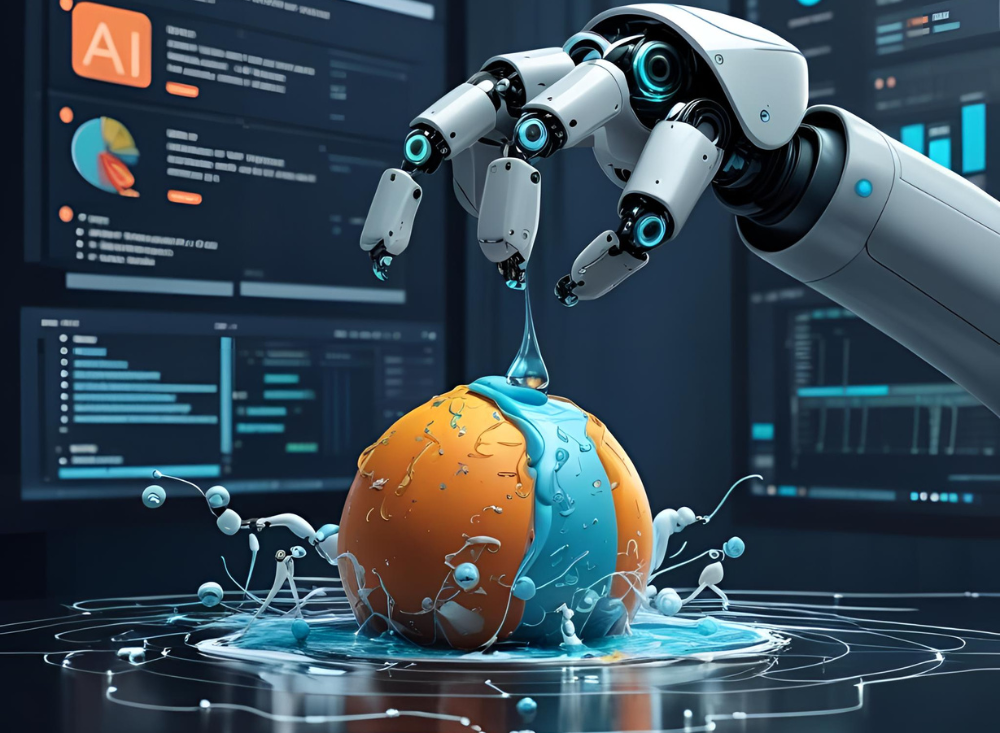
In the fast-evolving world of software development, delivering flawless applications—especially complex AI-driven systems like machine learning models, chatbots, or recommendation engines—demands a quality assurance (QA) process that maximizes creativity and minimizes repetitive tasks. Traditional testing methods bog down teams with endless clicking through manual processes, stifling innovation and slowing progress. AI-powered testing delivers less clicking, more creating, automating repetitive tasks with intelligent precision to provide comprehensive, reliable results effortlessly, transforming QA into a dynamic, creative process that empowers teams to focus on innovation and quality.
The Clicking Burden of Traditional Testing
Testing AI-driven applications requires validating functionality, performance, security, accessibility, and fairness across diverse scenarios, devices, and user interactions. Traditional testing methods overwhelm QA teams with repetitive clicking, limiting creative potential:
- Click-Heavy Test Creation: Manually entering test cases for every feature, edge case, or update, requiring countless clicks that drain creative energy.
- Repetitive Test Execution: Clicking through manual test runs across configurations, slowing validation and diverting focus from innovation.
- Maintenance Overload: Repeatedly clicking to update tests for evolving code, UI, or data, piling on tedious rework that stifles creativity.
- Error-Prone Distractions: Manual clicking leading to oversights or inconsistencies, requiring more clicks to fix defects and hindering creative problem-solving.
- Scalability Challenges: Clicking through tests for large-scale systems with complex behaviors, overwhelming teams and leaving little room for innovation.
AI-powered testing eliminates this clicking burden, automating QA with intelligence to free teams for creative, high-value work that drives quality.
How AI Delivers Less Clicking, More Creating
AI-powered testing leverages advanced techniques like machine learning, predictive analytics, and behavioral modeling to automate testing processes, reducing repetitive clicks and unlocking creative potential. By streamlining QA, AI empowers teams to innovate. Here’s how AI makes it happen:
1. Automated Test Case Generation
AI analyzes application code, requirements, and behavior to generate thousands of test cases instantly, covering functional scenarios, edge cases, and complex workflows with zero clicks. This frees teams from manual entry, sparking creativity in test design.
2. Seamless Test Execution
AI executes entire test suites across devices and scenarios in seconds, validating functionality, performance, and more without repetitive clicking. This effortless automation allows teams to focus on creative validation strategies.
3. Self-Adapting Test Maintenance
As applications evolve, AI dynamically updates test cases to reflect changes in code, UI, or data, eliminating click-heavy revisions. This frees teams to create innovative solutions rather than manage repetitive updates.
4. Proactive Defect Prediction
AI uses predictive analytics to anticipate issues like performance bottlenecks, biases, or security vulnerabilities, analyzing data without manual clicks. This proactive approach reduces defect-hunting clicks, enabling creative problem-solving.
5. Effortless User Behavior Simulation
AI simulates thousands of user interactions—clicks, swipes, multilingual inputs—across scenarios automatically, requiring no manual input. This frees teams to create comprehensive, creative test scenarios for real-world validation.
6. Real-Time Feedback and Insights
AI delivers instant feedback during testing, generating detailed defect reports with root causes and remediation suggestions without clicking through forms. This streamlines analysis, leaving room for creative issue resolution.
7. Creative Exploratory Testing
AI suggests high-value test paths based on real-time application behavior, like edge cases in a chatbot’s logic, enabling exploration with minimal clicks. This empowers teams to create innovative testing approaches with ease.
8. Seamless CI/CD Integration
AI embeds testing into CI/CD pipelines, automating validation with each code commit in real time, no clicks required. This continuous approach frees teams to focus on creating quality-driven development workflows.
9. Comprehensive Validation with Minimal Input
AI automates testing for functionality, performance, security, accessibility, and fairness, ensuring compliance with standards like GDPR or WCAG without repetitive clicks. This delivers holistic results, enabling creative focus on quality.
Benefits of Less Clicking, More Creating
The “less clicking, more creating” approach delivers transformative benefits:
- Creative Efficiency: AI automates repetitive clicks, freeing teams for innovative, high-value work.
- Rapid Results: Instant processes deliver comprehensive quality, keeping projects on track.
- Enhanced Precision: Automated workflows ensure accurate, reliable outcomes, minimizing errors.
- Joyful QA: Click-free automation boosts creativity, keeping teams energized and inspired.
- Scalability: AI handles complex systems, enabling creative testing for large-scale projects.
The Future of AI-Powered Testing
As AI-driven applications grow in complexity and release cycles accelerate, the demand for creative, efficient testing will surge. Advances in machine learning, natural language processing, and quantum computing will further enhance AI’s ability to reduce clicking and empower creativity, providing deeper insights and scaling to intricate systems. By embracing AI, QA teams can focus on innovation, delivering exceptional quality with minimal effort.
Less clicking, more creating with AI-powered testing. By automating test creation, execution, and maintenance with intelligent precision, AI delivers comprehensive, reliable results effortlessly, transforming QA into a dynamic, creative process. Unleash your innovation—AI makes testing precise, efficient, and extraordinary.